Tangier and enroute
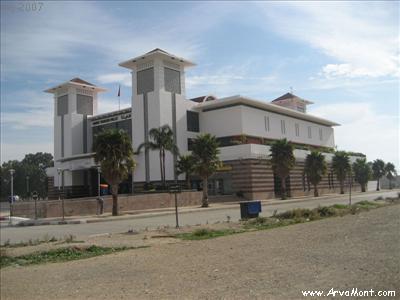
We arrived in Tangiers
on the ferry from Algeciras. The crossing took about an hour. In
Tangiers we boarded the first of two trains to Marrakech. Above is the train
(almost still brand new) station in Tangiers.
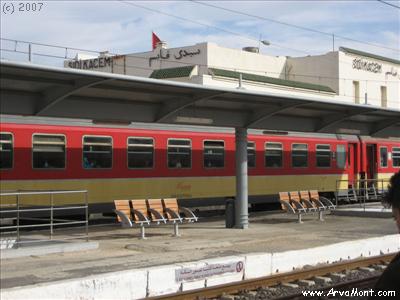
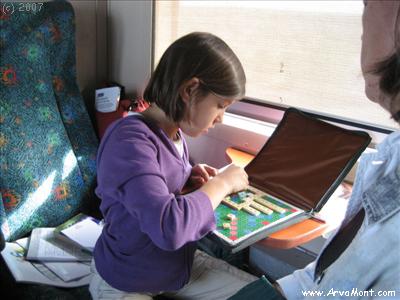 The train took all day. We amused ourselves.
The train took all day. We amused ourselves.
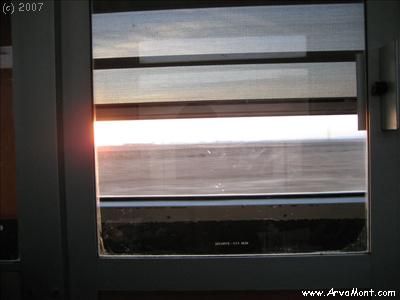

After traveling all day we arrived in
Marrakech. When you go to Marrakech you have to decide if you want to
stay in a hotel in the new town, or in a riad in the medina, the old town within
the walls.
We opted for the medina, as this was the part of town we wanted to explore.
Most of the riads are old houses that have been converted into bed and
breakfasts. They feature courtyards and fountains and plenty of the great
Moroccan architecture. We had a little riad to ourselves, right next to
the main riad which held the other 6-8 rooms.
The Little Riad
 An imposing view of our
riad! In the medina, most of the "streets" look like this: four
feet wide, mud walls three stories high, no windows and extending for more
than 50 meters in a straight line! None of these appear to have names, which doesn't
matter, as they are not labeled and no map shows all of them anyway!
You learn your way around using landmarks - we remembered, "the fifth right
after La Place, then zig zag home"
An imposing view of our
riad! In the medina, most of the "streets" look like this: four
feet wide, mud walls three stories high, no windows and extending for more
than 50 meters in a straight line! None of these appear to have names, which doesn't
matter, as they are not labeled and no map shows all of them anyway!
You learn your way around using landmarks - we remembered, "the fifth right
after La Place, then zig zag home"

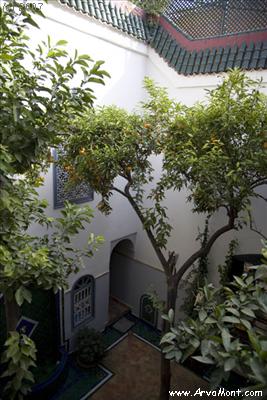 yes, orange trees growing in the living area.
yes, orange trees growing in the living area.
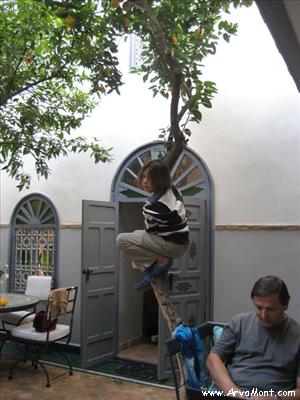

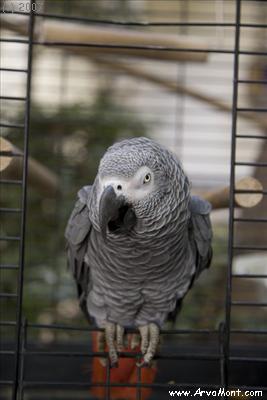
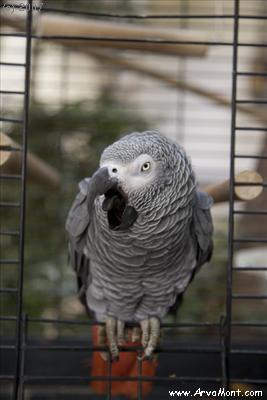 This is Kleinie; he lived in the main riad next door.
This is Kleinie; he lived in the main riad next door.
Transportation in the Medina
Yannis was going to do a photo
collection on the various forms of transportation in Marrakech...maybe we'll
just include it here.
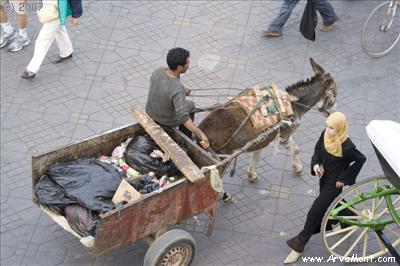
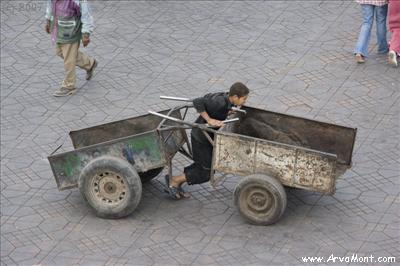
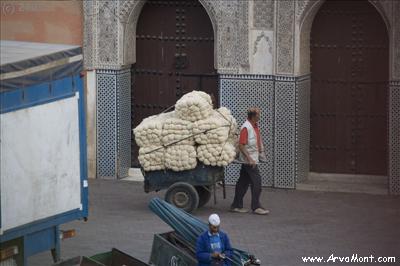
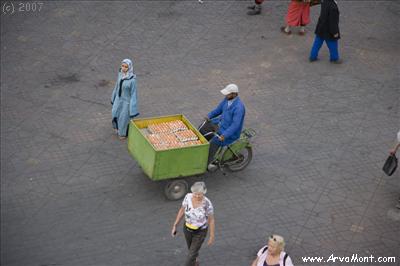
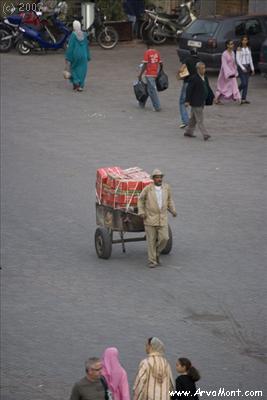

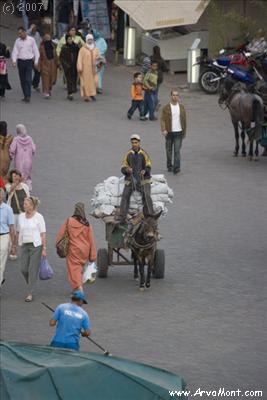

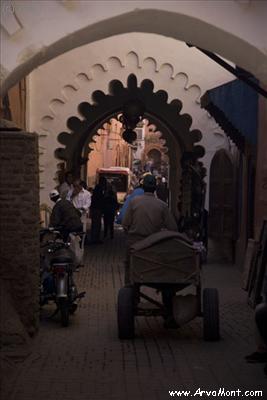

Djemaa el Fna or La Place
La Place is the main square in the medina. This
is where people of all sorts congregate day and night. During the day, this is where you come
to see the bizarre:
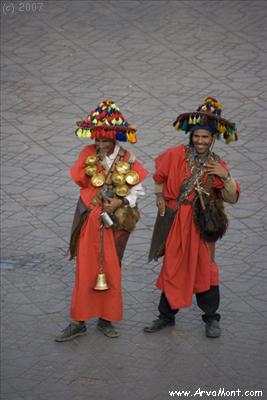

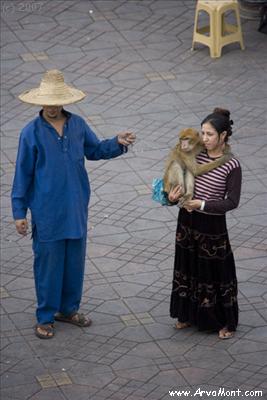
the water carriers...
the snake charmers...
the monkey trainers. (This lady was bitten by that monkey!)
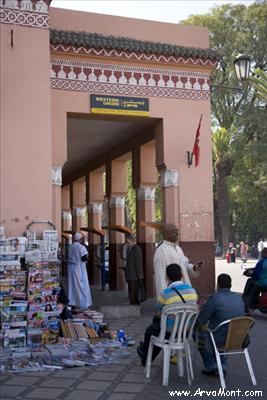
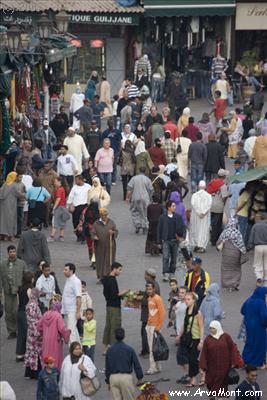
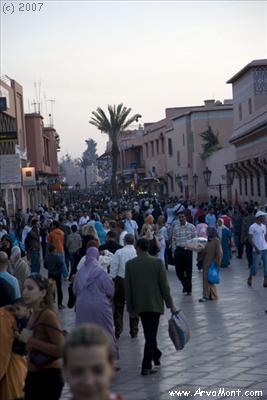
Or perhaps to conduct a little
business.
By night, the La Place is converted
into an outdoor party. Portable restaurants are set up where, during the
day, there was nothing but open space! Each is grilling something tasty,
the smoke obscuring the scene.. The daytime crowd seems to be largely
tourists and those catering to them. The evening crowd is locals.
The story tellers come out and you see huge circles of men listening to them,
enthralled. People veiled and masked to unveiled all mingled together
enjoying the cool of the night. The party seems to break up around
midnight. By morning, the tables, grills, chairs and other evidence of the
evening's activities have been put away!
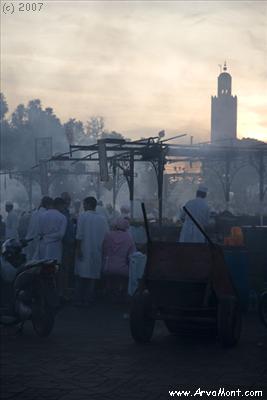
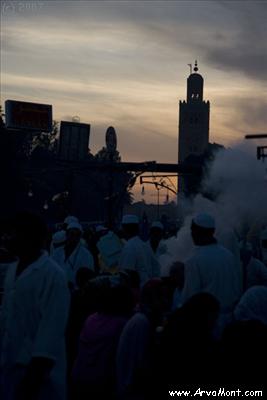
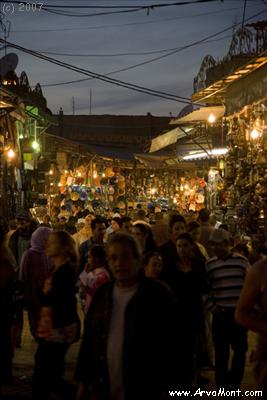
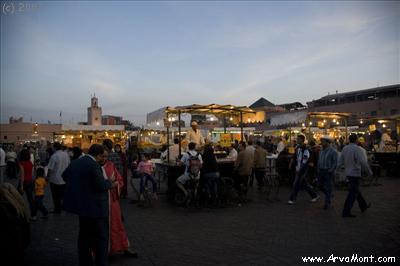
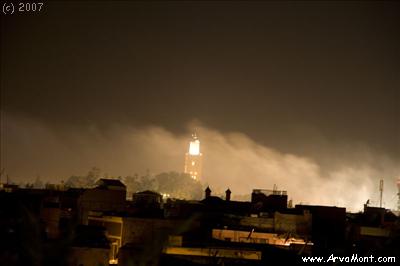
The Souks
A souk (or suq, a favorite Scrabble
word!) is a shopping area. These were originally organized by guild, so
all of the cloth weavers were together, and all of the brass workers, the
tanners, the spice sellers, etc. Though this is no longer the law, it is
certainly still largely the way things are organized.
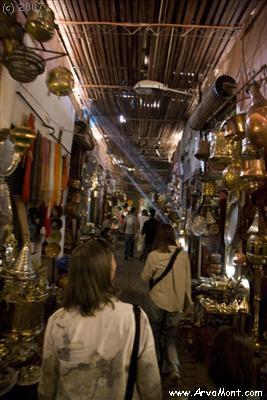
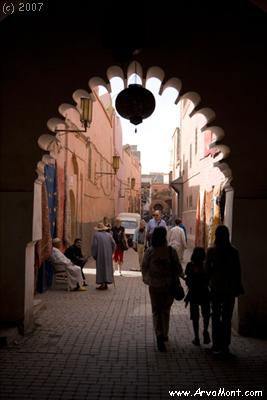
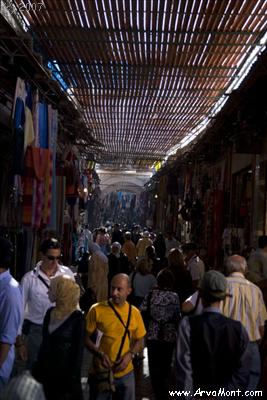

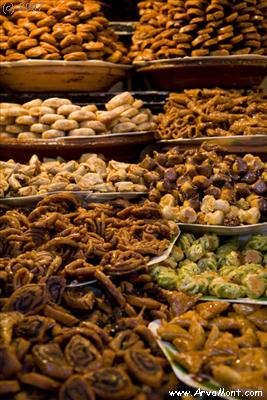
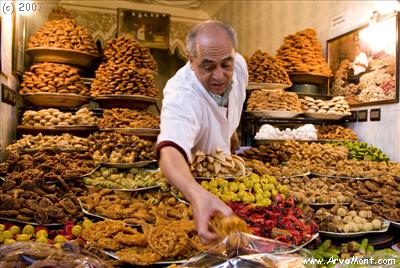
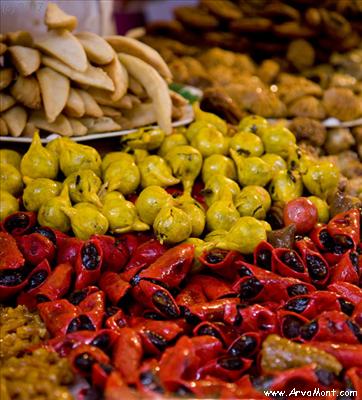
We stopped for some sweats from this
shop - yum.
The Museum
We went to the museum with low
expectations. The guide books all say not to bother, as had a fellow we
met on the train. But, entrance was included with a ticket to see the
Medersa and the fountain, so we peeked in. We enjoyed the architecture of
the museum more so than the collections.
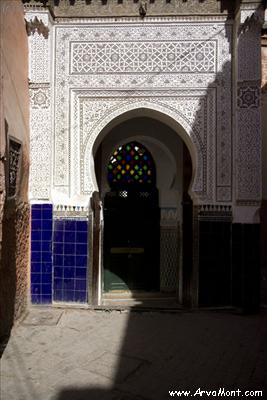
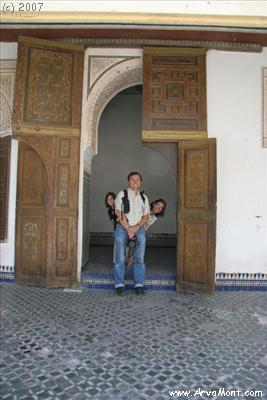
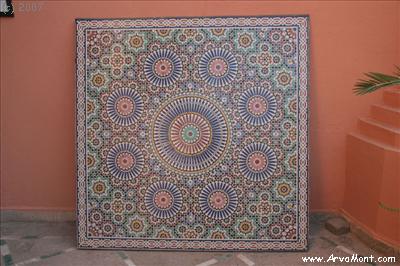
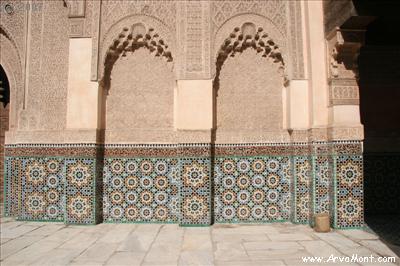
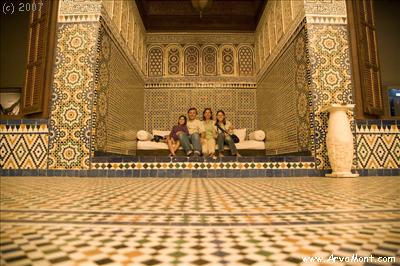
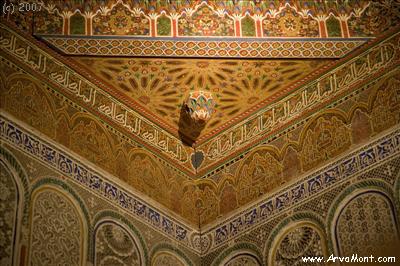

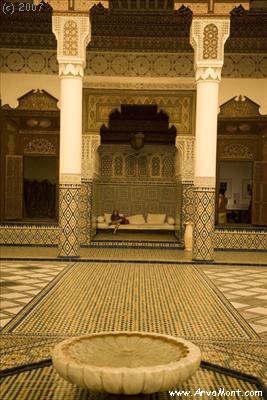

The Medersa ben Youssef
This was a Koranic school. The
inside was both stark and rich! The common areas were beautifully
decorated in tile mosaic and ornamental plaster. They featured courtyards
and alcoves, cookie-cutter doorways and ornate, carved, wooden window features.
The private areas were unadorned, and extremely crowded! I guess that made
students study more!
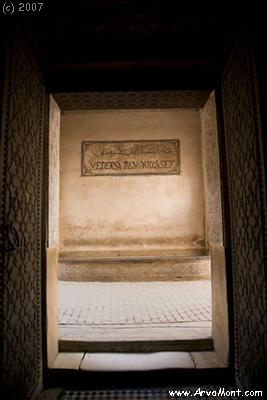

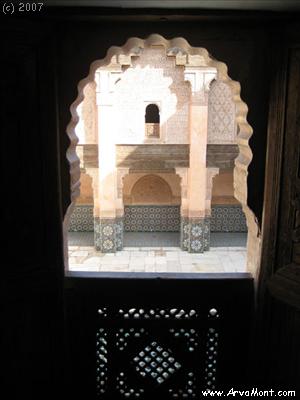
The Fountain
The history of Marrakech is one of
repeated conquering. The tribe that built Marrakech built a grand mosque.
Their conquerors tore is down and built a new mosque on the same place.
They left this fountain, though. A Muslim must wash before prayers, so
fountains are built just outside for this purpose. This is the oldest
structure in Marrakech and dates from the 1100s.

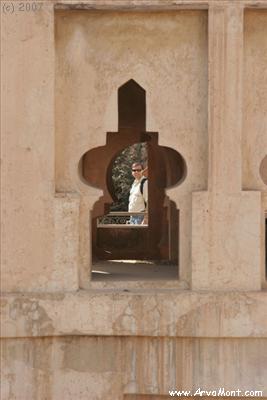
A Palace
This was the palace of a wealthy man,
who was the sultan's administrator. He used the palace, which is located
very close to the sultan's, as both his residence and his office. The
guidebook pointed out that this man had four wives and 24 ladies in his
employ, all of whom had to be housed, presenting an interesting challenge to the
architect! Each of the wives had apartments on the second floor. He
ruled the front of the house. In the rear he built a ladies courtyard,
where his harem lived. Rumor has it that he and his brother were
eventually murdered by the sultan's mother, because she saw them as a threat to
her son. The riches were cleared out and moved to Mekes. There were
so many of them that it took 10 years!

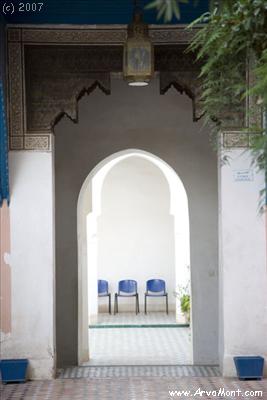
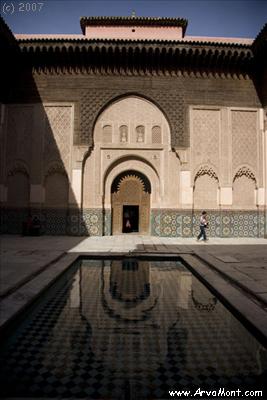
 The harem courtyard, featured in "The Man Who Knew Too Much," I think.
The harem courtyard, featured in "The Man Who Knew Too Much," I think.
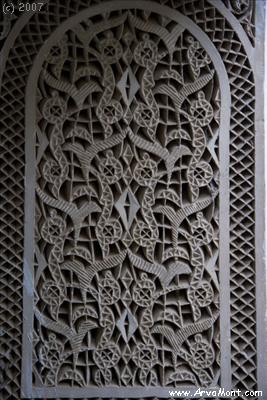
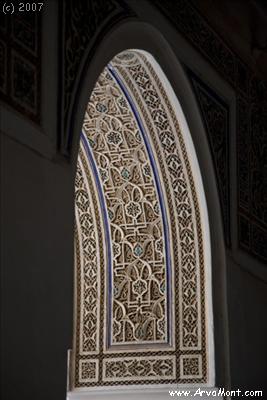

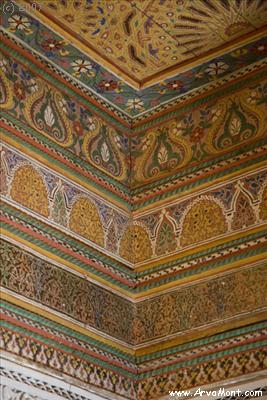
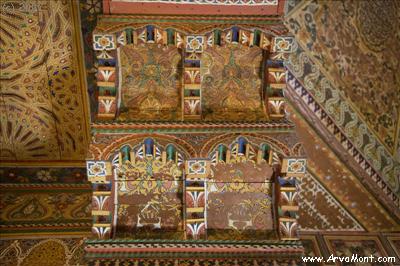 We loved the details inside all the buildings we toured. Beginning at the floor, there are bright
colored intricate mosaics. These extend up the walls. Bordering the
mosaic is ornamental plaster, often with verses from the Koran. This
plaster extends upwards rising to the carved and painted wooden moldings
and ceilings. Beautiful!
We loved the details inside all the buildings we toured. Beginning at the floor, there are bright
colored intricate mosaics. These extend up the walls. Bordering the
mosaic is ornamental plaster, often with verses from the Koran. This
plaster extends upwards rising to the carved and painted wooden moldings
and ceilings. Beautiful!
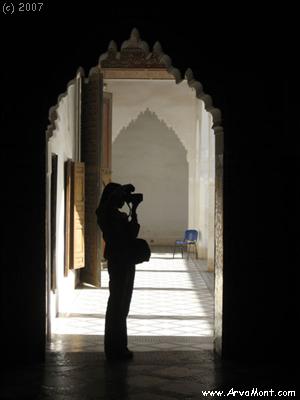


Taking in the palace in their own
way...
Gueliz - The New City
The medina is a fascinating place,
but on our last day we ventured out to the new town. It is a big city!
There is even a McDonalds, which of course had to be checked out! Interestingly, we couldn't wait to get back to
the medina where is was cool!

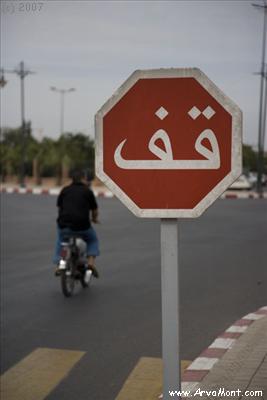
From quaint little Marrakech we
traveled to Cairo.
|  Around
the World With the ArvaMonts
Around
the World With the ArvaMonts


































































